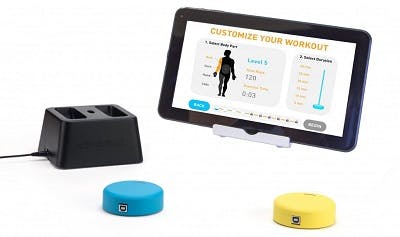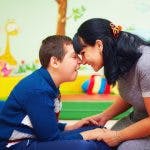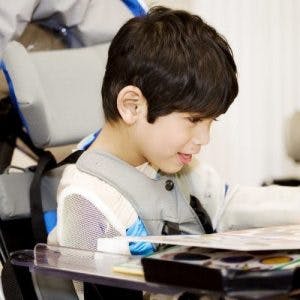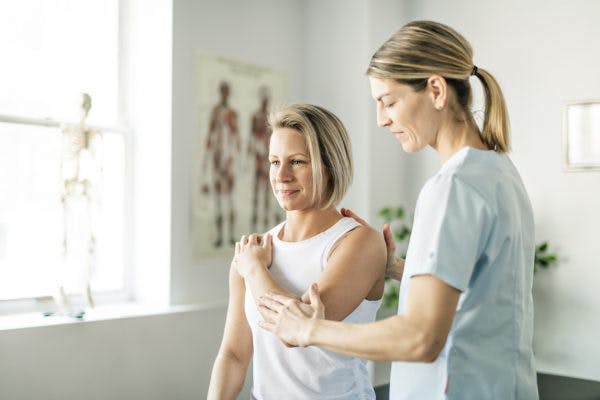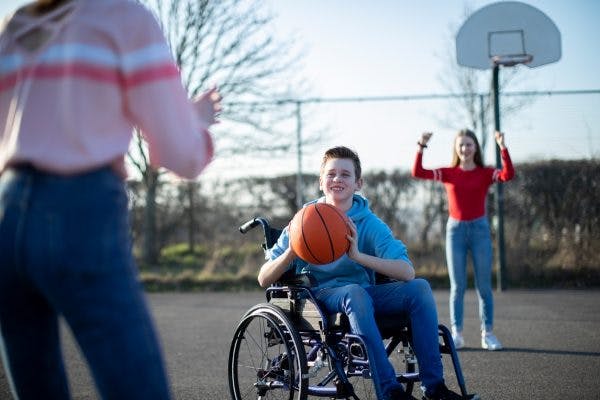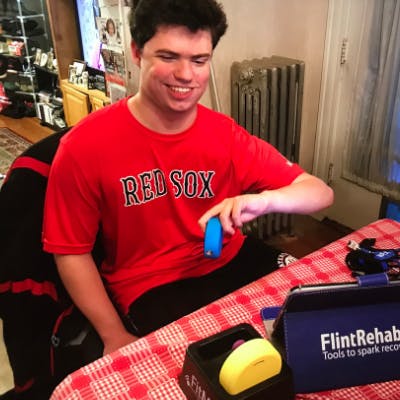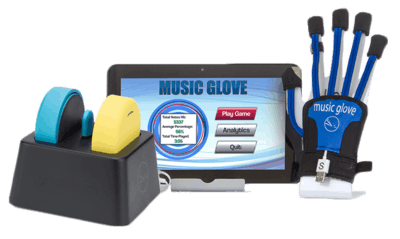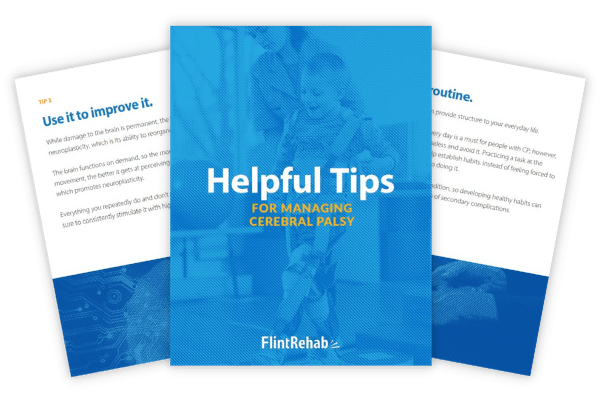Can people with cerebral palsy walk? Cerebral palsy describes a spectrum of different motor impairments that can affect movement, balance, posture, and coordination. As a result, the ability to walk primarily depends on the location and severity of one’s motor impairments. However, many individuals with cerebral palsy can walk or learn to improve their ability to walk.
To help you understand walking ability in individuals with CP, this article will discuss:
Can People with Cerebral Palsy Walk?
Yes, many people with cerebral palsy can walk! In fact, over half of all individuals with cerebral palsy can walk on their own without mobility aids like walkers or crutches.
Cerebral palsy can range from mild to severe and affect various regions of the body. Typically, individuals with CP who are able to walk have mild to moderate motor impairments in their legs. Often, these motor impairments are managed with the help of physical therapy, orthotics, and muscle relaxants or Botox injections.
While walking can be a realistic goal for many individuals with cerebral palsy, it’s not always possible. However, it’s essential to understand that many individuals with cerebral palsy can still be functional and have a high quality of life even while using a mobility aid or a wheelchair. By learning adaptive techniques to maximize their functional independence, individuals with CP can live fulfilling lives.
In the following section, we’ll discuss how functional abilities are classified among individuals with CP.
Classifying Walking Ability in Individuals with Cerebral Palsy

The severity of cerebral palsy is frequently measured through the Gross Motor Function Classification System (GMFCS). It consists of 5 levels with level 1 being the mildest and level 5 the most severe.
Generally, children with GMFCS levels 1 and 2 are able to walk independently. In contrast, children with GMFCS levels 3 and 4 are more limited in their walking ability and need to use mobility aids to walk short distances. Individuals with GMFCS level 5 have very severe motor impairments and rely on wheelchairs with caregiver assistance for mobility.
This study assessed the stability of GMFCS levels in 610 children with CP. While 73% of the children remained in their initial GMFCS level throughout the duration of the study, 27% were reclassified when assessed at a later date. This demonstrates that while GMFCS levels are generally consistent, they can change and improvements are possible. Of note, most improvements in GMFCS level are seen in children below age 5. This highlights the importance of early intervention in the management of cerebral palsy.
Up next, we’ll discuss interventions that can help individuals with cerebral palsy improve their motor functions.
Want 19 pages of CP recovery tips in PDF form? Click here to download our free illustrated ebook now (link opens a pop up for uninterrupted reading)
How to Improve Walking in Cerebral Palsy Patients
The brain can use neuroplasticity (the central nervous system’s ability to reorganize itself) to make adaptive changes and improve motor functions. By consistently stimulating the brain through task-specific repetition, individuals with cerebral palsy may be able to improve their gait.
Below, we’ll go over 5 effective interventions that can help individuals with cerebral palsy improve their mobility.
1) Manage Spasticity
Up to 80% of individuals with cerebral palsy have spastic cerebral palsy, which is characterized by high muscle tone (spasticity).
Generally, when someone with cerebral palsy walks with an abnormal gait, it’s because spasticity pulls their knees, hips, or ankles in a certain direction. If not properly managed, spasticity can progress over time and further compromise walking ability.
Spasticity treatments like Botox or muscle relaxants can help temporarily relieve high muscle tone so that individuals can focus on their physical therapy and likely make greater long-term improvements.
2) Go to Physical Therapy
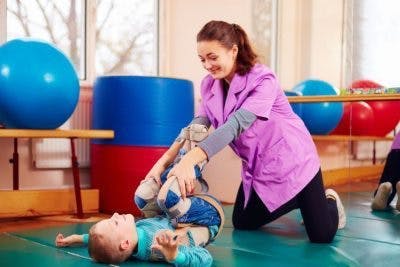
At physical therapy, your child can learn exercises to help improve their mobility long-term. A physical therapist will assess their functional abilities and create a personalized exercise regimen to maximize range of motion, lengthen tight muscles, and strengthen underused muscles.
Gait training is a type of physical therapy that focuses on optimizing walking function. It can involve various exercises and equipment. For example, individuals can wear a harness that helps support their body weight while walking on a treadmill. This helps reduce the amount of pressure placed on the joints so individuals can focus on using correct form.
Similarly, some physical therapists may encourage aquatic therapy. The buoyancy of water can make it easier to work on walking with a proper gait and water resistance can help further strengthen underused muscles.
Equally as important as attending physical therapy is the necessity to continue working on the skills learned in therapy through a home exercise program. Carryover to daily life is essential to improving functional gait in the long run. Consistently stimulating the brain through highly repetitive, task-specific movements can help promote circuit reorganization in the brain to permanently reduce spasticity and improve movement patterns.
3) Use Orthotics
Orthotics like braces, casts, and splints are wearable devices that help support proper musculoskeletal alignment. Because individuals with cerebral palsy experience abnormal muscle tone, wearing an orthosis can provide the additional support necessary to reduce compromised posture, gently lengthen tight muscles, and restrict unwanted movements.
While function is paramount, good form is necessary to prevent long-term function from worsening. By focusing on maintaining correct form, individuals with cerebral palsy can promote better long-term mobility.
4) Seek Early Intervention
Habits are formed by strengthening neural pathways in the brain through highly repetitive, task-specific practice. The earlier you seek cerebral palsy management options, the less time abnormal movement patterns (which lead to poor habits) have to develop.
Additionally, younger brains have greater levels of plasticity, meaning that it is easier for children to learn new habits that can replace harmful ones than it is for adults.
5) Challenge Yourself
Rewiring the brain to improve your child’s gait isn’t going to happen overnight. It takes thousands of repetitions to promote neurological adaptations, so it’s essential to trust in the process and keep practicing.
A child’s motivation is considered a major determinant of developing basic motor abilities in children with CP. Without engagement, children can easily lose their motivation.
One of the most effective ways to promote engagement is to make sure that your child is continuously being challenged. The more engaged an individual is, the more likely they are to continue performing the repetitions they need to improve. If you’re unsure how to make your exercises more challenging, interactive rehabilitation devices can help.
FitMi home therapy is a rehabilitative exercise program designed to motivate individuals with neurological conditions like cerebral palsy to improve their mobility. It encourages users to perform a high number of therapeutic exercises, which is key to promoting adaptive changes in the brain. FitMi also adapts to their ability level to ensure they are being challenged the perfect amount. The more individuals with cerebral palsy practice using their affected muscles, the stronger pathways in the brain become, and the more natural movements will feel.
Walking with Cerebral Palsy: Key Points
Cerebral palsy is a motor disability that may or may not affect one’s ability to walk. Severity and location of brain damage influence how severely motor impairments are experienced and what areas of the body are affected.
Luckily, functions affected by cerebral palsy can be reorganized and improved through repetitive stimulation. Thanks to the extremely adaptive properties of the brain, there’s always hope for improvement.


